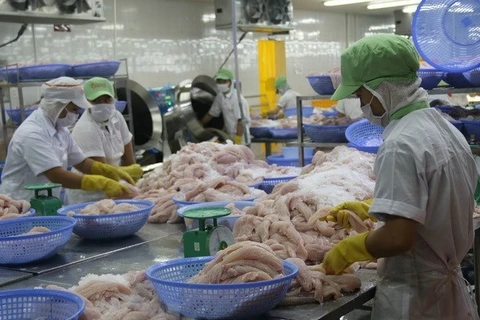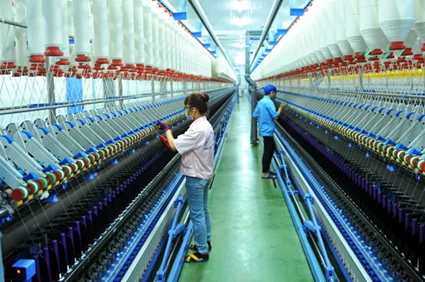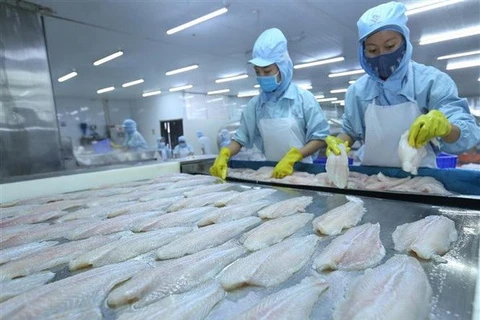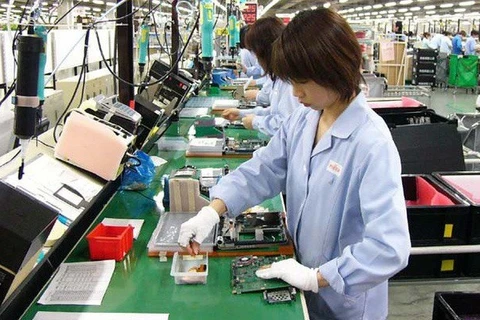 A pineapple processing line of the An Giang Fruits-Vegetables & Foodstuff JSC in An Giang province (Photo: VNA)
A pineapple processing line of the An Giang Fruits-Vegetables & Foodstuff JSC in An Giang province (Photo: VNA) Hanoi (VNA) - Experts have judged that the national export goal and trade deficit rate next year set by the Government was feasible.
At the sixth session of the 14th National Assembly, the Government discussed economic goals for next year. The goal is for gross domestic product (GDP) to increase between 6.6 and 6.8 percent, consumer price index (CPI) growth to be about 4 percent on average, the total export turnover to increase between 7 and 8 percent, the ratio of trade deficit over the total export turnover to be less than 3 percent and the total development investment capital for the society to be 33-34 percent of GDP.
Associate Professor Dr Dinh Trong Thinh from the Academy of Finance said Vietnam had exceeded the plan set by the National Assembly and the Government for import-export activities over the past few years.
“This is a remarkable achievement, contributing to the relatively stable economic growth,” he said.
Although the country’s export growth is dependent on foreign direct investment (FDI) enterprises, Thinh is optimistic that the export of agriculture, forestry and fishery products, fruits and vegetables had made significant progress in recent years.
Fruit had become a bright spot in export activities as it overcame rice exports. This was a very important move in changing Vietnam from a rice producer to an exporter of vegetables and fruits, Thinh said.
Consumer goods have also shown relatively strong development, including dairy products and manufactured goods with growing export turnover.
Confirming the import-export sector has been the highlight of the economy in recent years, Dr Pham Tat Thang, senior researcher of the Trade Research Institute under the Ministry of Industry and Trade, pointed out the growth rate of exports and imports was often two or three times higher than the growth rate of the Vietnamese economy.
When assessing the export-import target set by the Government for next year, Thang believed Vietnam would achieve the results as expected and said that if the Government and enterprises made any breakthroughs, the results might even be better. The business environment has improved quickly.
Despite being optimistic about achievements, experts still pointed out some disadvantages.
According to Thang, small- and medium-sized enterprises (SMEs) were still facing barriers to development. If these barriers could be eliminated, SMEs could contribute greatly to economic development.
In the field of export, Thang noted Vietnam would be influenced by the US-China trade war.
"Our goods have been exported to China for a long time and we are quite dependent on that market,” he said. “When the trade war began, the demand of the Chinese economy reduced, making it difficult to export Vietnamese goods to China. Vietnam must find a replacement market right now. In order to find new markets, Vietnam has to change its production structure to meet demand."
As for the trade deficit rate goal for next year, Associate Prof. Thinh said that reducing trade deficit hinged on two factors.
First, Vietnam must accelerate the export of goods. Secondly, it should try to reduce the import of consumer goods to promote local production activities and improve the quality of domestic goods.
"Along with that, it is necessary to consider reducing the import of raw materials for production because many commodities are still dependent on imported materials from other countries including China,” he said, adding that the construction of processing and manufacturing plants must be sped up to add value for locally made products.-VNA
VNA
























